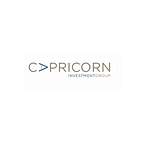Seurat Technologies and Capricorn Investment Group
June 2022
Manufacturing is one of the single largest sources of greenhouse gas emissions around the globe. In the US, manufacturing accounts for almost a quarter (23%) of direct carbon emissions.¹
Current methods of metal parts manufacturing like machining, casting, and forging are either wasteful of raw material, energy & time intensive, or all the above. Subtractive manufacturing cuts raw materials down into size and traditionally recycling what is not used in the final product. Other methods such as injection molding and metal stamping require large thousands of units of volume to become economical. The advent of additive manufacturing (AM) thirty years ago showed the potential to cut raw material waste, energy use, and carbon emissions along the supply chain. Until now, however, the applications for AM were limited to low volume, high-end products like medical implants and turbine engine parts, due to high cost and relatively slow speeds.
Wilmington, Massachusetts based Seurat Technologies is developing a more advanced AM technique called Area Printing, which will print precision metal parts faster and more economically. Seurat’s Area Printing process manufactures parts with mechanical properties that meets or exceeds industry standards and will soon print at a speed unachievable not only by other metal AM techniques but also conventional manufacturing methods, all while pursuing decarbonization of manufacturing.
Seurat was named after the painter Georges Seurat, who used a technique called pointillism: the application of thousands of tiny dots of pure color to a canvas to compose a larger image. In the same way, Seurat uses a powerful laser containing 2.3 million pixels, like brush strokes, to micro-weld thin metal powder layers to the area below it, manufacturing entire renderings at once in a single defined area.
Previous AM methods attempted to overcome obstacles to faster printing by using more powerful lasers and larger spot sizes, however this resulted in decreasing resolution. The next solution was to add additional lasers — the industry standard is now 4 — however it is not nearly enough to reach the speed necessary to print sophisticated high-quality metal parts at scale.
Rather than increasing the number of laser sources, Seurat uses a completely new method of beam manipulation to increase melted volume per time. They send a single beam through an Optically Addressed Light Valve (OALV), developed by the Department of Energy’s Lawrence Livermore National Laboratory (LLNL), which can dynamically sculpt the high-power laser light according to pre-programmed layer-by-layer images.
While usual metal AM systems works with a spot diameter of 100 micrometer (μm) square spot size, Area Printing delivers two million points of laser light into a 15 mm square area, with each point of light having a roughly 10 μm diameter. With this method, Seurat can simultaneously increase build rate, while also improving resolution.
The increased speed and precision of Area Printing, the ability to economically manufacture high volume products with consistency and repeatability will enable Seurat to localize manufacturing and reshore business and jobs.
Seurat also has ambitions to decarbonize manufacturing. They are working on verifying their carbon offset projections following ISO 14064 guidance, an international standard that addresses the reporting of greenhouse gas emissions and are excited to exponentially increase their positive impact going forward.
Seurat is now partnering with the world’s largest manufacturers to migrate their designs to Area Printing and will be soon releasing their first commercial system. They intend to partner with the largest companies in aerospace, energy, consumer electronics and industrial sectors to commercialize new applications. Their first-generation production machine is set to be capable of 3D printing at a cost of $300/kg, with the goal of $150/kg by 2025, on par with casting-level capabilities.
Capricorn Investment Group’s Technology Impact fund (TIF) is a venture capital partnership that invests in companies that develop novel materials, devices, systems, and business models — from Silicon Valley chipsets to emerging world micro-grids — to propel the new crop of sustainable companies and renewable infrastructure.
1 Sources of Greenhouse Gas Emissions. (2022, April 14). EPA. https://www.epa.gov/ghgemissions/sources-greenhouse-gas-emissions
